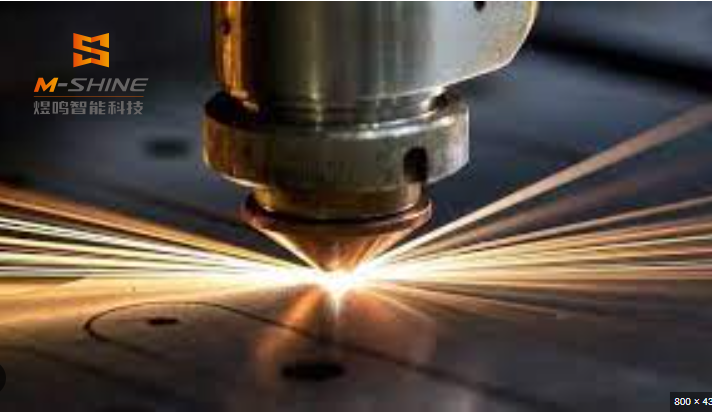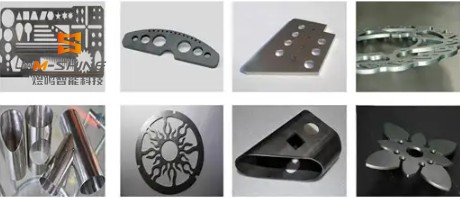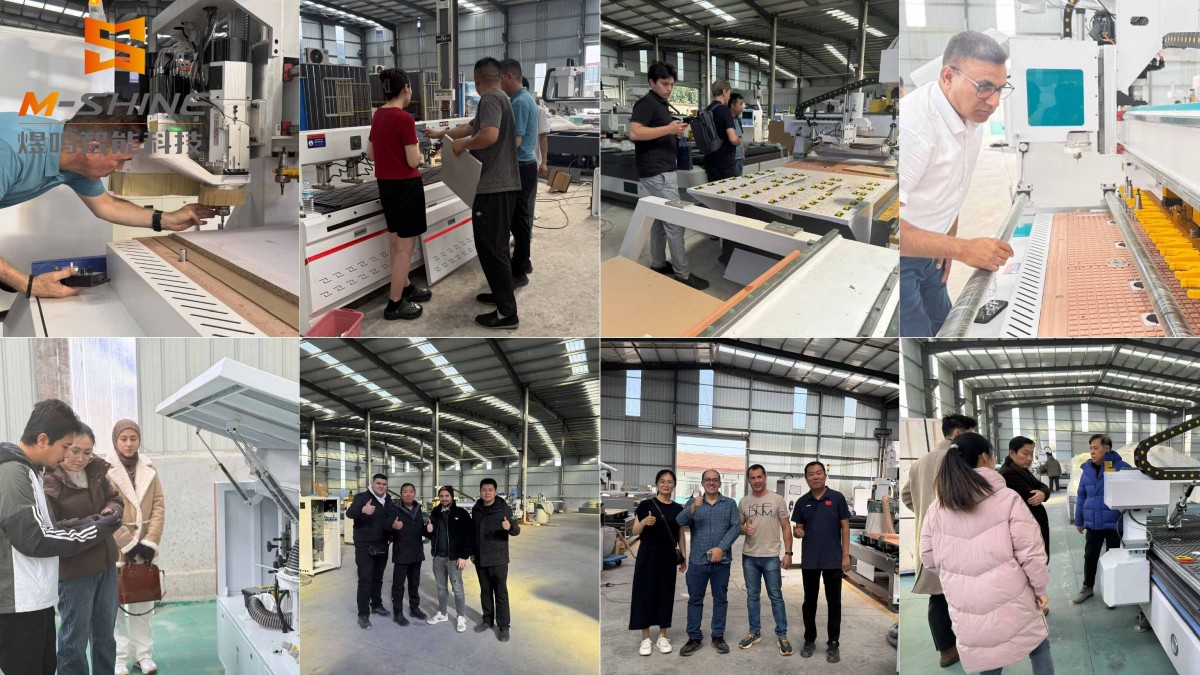Simply put, a laser cutting parameter table is a set of pre-set "formulas" for achieving optimal cutting results on specific machines for specific materials and thicknesses.
Its importance is mainly reflected in the following core aspects:
The decisive impact on processing quality
The parameter table directly controls the final cutting effect and is the core of ensuring product quality.
1. Cutting accuracy and dimensional accuracy
·Incorrect parameters can lead to excessive melting (overburning) or incomplete cutting, resulting in parts dimensions that do not match the design drawings and cannot be assembled.
·The correct parameters can ensure stable kerf width and ensure that every cut part is accurate and error free.
2. Cut quality
·Slag hanging: Improper parameters (such as high/low air pressure, insufficient power) can result in a large amount of difficult to remove slag on the back, seriously affecting product aesthetics and increasing post-processing costs.
·Roughness: Optimized parameters can achieve smooth and vertical cutting surfaces. Incorrect parameters can result in rough stripes (cutting lines) on the cut surface, affecting the product's grade and functionality.
·Verticality: For thick plates, parameters (especially focus position and air pressure) can affect the taper of the incision. Good parameters can minimize taper and achieve consistent incisions from top to bottom.
3. Control of heat affected zone
·Laser cutting is a thermal processing process, and improper parameters can generate enormous heat, causing hardening, discoloration, or deformation of the cutting edge of materials (especially metals).
·Correct parameters, such as high peak power and high-frequency pulse cutting, can effectively control heat input, minimize the heat affected zone, and maintain the original physical properties of the material.

| Laser cutting parameter table |
|
|
| material | Thickness | 25W | 40W | 60W | 80W | 100W | 130W | 150W | 180W | 200W | 260w |
|
| Remarks (laser power is 95%) |
| maximum speed | Optimum speed | maximum speed | Optimum speed | maximum speed | Optimum speed | maximum speed | Optimum speed | maximum speed | Optimum speed | maximum speed | Optimum speed | maximum speed | Optimum speed | maximum speed | Optimum speed | maximum speed | Optimum speed | maximum speed | Optimum speed |
|
|
| Acrylic | 3mm | 8mm/s | 5mm/s | 15mm/s | 10mm/s | 20mm/s | 15mm/s | 25mm/s | 20mm/s | 30mm/s | 25mm/s | 35mm/s | 30mm/s | 40mm/s | 35mm/s | 45mm/s | 40mm/s | 55mm/s | 45mm/s | 55mm/s | 45mm/s |
|
| When cutting acrylic, attention should be paid to airflow control. The amount of air blown on the surface of the material should be small or blown sideways to ensure the smoothness of the acrylic; The bottom of the material should have air flow to prevent fire. |
| 5mm | 4mm/s | 2mm/s | 8mm/s | 5mm/s | 10mm/s | 7mm/s | 12mm/s | 8mm/s | 15mm/s | 10mm/s | 17mm/s | 12mm/s | 21mm/s | 15mm/s | 25mm/s | 18mm/s | 30mm/s | 25mm/s | 30mm/s | 25mm/s |
|
|
| 8mm | 1mm/s | —— | 4mm/s | 2mm/s | 5mm/s | 3mm/s | 9mm/s | 5mm/s | 10mm/s | 6mm/s | 12mm/s | 8mm/s | 15mm/s | 10mm/s | 18mm/s | 12mm/s | 25mm/s | 15mm/s | 25mm/s | 15mm/s |
|
|
| 1cm | —— | —— | 3mm/s | —— | 4mm/s | 2mm/s | 6mm/s | 3mm/s | 7mm/s | 4mm/s | 8mm/s | 5mm/s | 11mm/s | 7mm/s | 16mm/s | 10mm/s | 20mm/s | 13mm/s | 20mm/s | 13mm/s |
|
|
| 15mm | —— | —— | —— | —— | 2mm/s | 0.8mm/s | 3mm/s | 1.5mm/s | 4mm/s | 2mm/s | 5mm/s | 3mm/s | 7mm/s | 4mm/s | 9mm/s | 6mm/s | 11mm/s | 8mm/s | 11mm/s | 8mm/s |
|
|
| 20mm | —— | —— | —— | —— | 1mm/s | 0.3mm/s | 1.5mm/s | 0.5mm/s | 2mm/s | 0.7mm/s | 3mm/s | 1mm/s | 4mm/s | 1.5mm/s | 5mm/s | 2mm/s | 7mm/s | 4mm/s | 7mm/s | 4mm/s |
|
|
| 25mm | —— | —— | —— | —— | —— | —— | 0.5mm/s | 0.2mm.s | 0.8mm/s | 0.3mm/s | 1mm/s | 0.4mm/s | 1.8mm/s | 0.8mm/s | 2.5mm/s | 1.2mm/s | 5mm/s | 3mm/s | 5mm/s | 3mm/s |
|
|
| 30mm | —— | —— | —— | —— | —— | —— | —— | —— | 0.3mm/s | —— | 0.5mm/s | 0.3mm/s | 0.8mm/s | 0.5mm/s | 1.3mm/s | 0.8mm/s | 3mm/s | 1.5mm/s | 3mm/s | 1.5mm/s |
|
|
| 35mm | —— | —— | —— | —— | —— | —— | —— | —— | —— | —— | 0.2mm/s | —— | 0.4mm/s | 0.1mm/s | 0.6mm/s | 0.3mm/s | 1mm/s | 0.7mm/s | 1mm/s | 0.7mm/s |
|
|
| 40mm | —— | —— | —— | —— | —— | —— | —— | —— | —— | —— | —— | —— | 0.1mm/s | —— | 0.2mm/s | 0.1mm/s | 0.5mm/s | 0.3mm/s | 0.5mm/s | 0.3mm/s |
|
|
| Knife template | 15mm | —— | —— | —— | —— | —— | —— | —— | —— | —— | —— | 4mm/s | 3mm/s | 6mm/s | 4.5mm/s | 8mm/s | 6mm/s | 11mm/s | 9mm/s | 11mm/s | 9mm/s |
|
| The cutting of knife templates mainly focuses on focal length and airflow control. The larger the airflow, the faster the cutting speed, and the smaller the air outlet, the greater the force acting on the unit area of the material; It is recommended to use a focusing lens with a focal length of 100mm or more, as this will result in a longer depth of focus and better accuracy of the cutting edge. |
| 18mm | —— | —— | —— | —— | —— | —— | —— | —— | —— | —— | 2mm/s | 1.2mm/s | 4mm/s | 2.5mm/s | 5mm/s | 3.5mm/s | 8mm/s | 6mm/s | 8mm/s | 6mm/s |
|
|
| 20mm | —— | —— | —— | —— | —— | —— | —— | —— | —— | —— | —— | —— | 2.5mm/s | 1.8mm/s | 3.5mm/s | 2.5mm/s | 6mm/s | 4.5mm/s | 6mm/s | 4.5mm/s |
|
|
| Density board (high-density board) | 3mm | 5mm/s | 3.5mm/s | 9mm/s | 7mm/s | 15mm/s | 12mm/s | 20mm/s | 15mm/s | 23mm/s | 18mm/s | 25mm/s | 20mm/s | 30mm/s | 25mm/s | 33mm/s | 28mm/s | 40mm/s | 35mm/s | 40mm/s | 35mm/s |
|
| When cutting density boards, it is important to pay attention to airflow control. The larger the airflow, the faster the cutting speed. |
| 5mm | 2mm/s | —— | 5mm/s | 3.5mm/s | 10mm/s | 8mm/s | 13mm/s | 10mm/s | 15mm/s | 13mm/s | 18mm/s | 15mm/s | 21mm/s | 18mm/s | 25mm/s | 21mm/s | 30mm/s | 25mm/s | 30mm/s | 25mm/s |
|
|
| 10mm | —— | —— | —— | —— | 3mm/s | —— | 5mm/s | 3.5mm/s | 7mm/s | 5mm/s | 9mm/s | 6.5mm.s | 12mm/s | 9mm/s | 14mm/s | 11mm/s | 18mm/s | 15mm/s | 18mm/s | 15mm/s |
|
|
| 15mm | —— | —— | —— | —— | —— | —— | —— | —— | 2.5mm/s | —— | 4mm/s | 3mm/s | 7mm/s | 5.5mm/s | 9mm/s | 7mm/s | 12mm/s | 10mm/s | 12mm/s | 10mm/s |
|
|
| 18mm | —— | —— | —— | —— | —— | —— | —— | —— | —— | —— | —— | —— | 4mm/s | —— | 5mm/s | 4mm/s | 8mm/s | 7mm/s | 8mm/s | 7mm/s |
|
|
| leather | single layer | 6mm/s | 5mm/s | 15mm/s | 12mm/s | 20mm/s | 17mm/s | 25mm/s | 20mm/s | 30mm/s | 25mm/s | 40mm/s | 35mm/s | 45mm/s | 40mm/s | 50mm/s | 45mm/s | 60mm/s | 55mm/s | 60mm/s | 55mm/s |
|
| It is recommended to use a focusing lens with a focal length of 50 for leather cutting, in conjunction with a 60W-100W laser tube and a small air compressor. |
| Wooden board (excluding rare hard wood) | 3mm | 4mm/s |
| 10mm/s | 8mm/s | 15mm/s | 12mm/s | 20mm/s | 18mm/s | 25mm/s | 22mm/s | 30mm/s | 28mm/s | 35mm/s | 33mm/s | 40mm/s | 37mm/s | 50mm/s | 48mm/s | 50mm/s | 48mm/s |
|
| When cutting wooden boards, it is important to pay attention to airflow control. The larger the airflow, the faster the cutting speed。 |
| 5mm |
|
| 5mm/s |
| 10mm/s | 8mm/s | 15mm/s | 10mm/s | 20mm/s | 18mm/s | 25mm/s | 22mm/s | 30mm/s | 28mm/s | 35mm/s | 32mm/s | 45mm/s | 42mm/s | 45mm/s | 42mm/s |
|
|
| 10mm |
|
|
|
| 4mm/s |
| 8mm/s | 6mm/s | 12mm/s | 10mm/s | 15mm/s | 13mm/s | 20mm/s | 17mm/s | 25mm/s | 20mm/s | 35mm/s | 30mm/s | 35mm/s | 30mm/s |
|
|
| 15mm |
|
|
|
|
|
|
|
| 8mm/s | 5mm/s | 11mm/s | 8mm/s | 15mm/s | 13mm/s | 18mm/s | 15mm/s | 25mm/s | 22mm/s | 25mm/s | 22mm/s |
|
|
| cloth | single layer | 25mm/s | 20mm/s | 40mm/s | 38mm/s | 60mm/s | 58mm/s | 100mm/s | 98mm/s | 200mm/s | 195mm/s | 300mm/s | 295mm/s | 400mm/s | 395mm/s | 500mm/s | 495mm/s | 600mm/s | 590mm/s | 600mm/s | 590mm/s |
|
| Same leather cutting |
| PVC | 2mm | 15mm/s | 13mm/s | 35mm/s | 32mm/s | 50mm/s | 45mm/s | 60mm/s | 58mm/s | 70mm/s | 68mm/s | 80mm/s | 78mm/s | 90mm/s | 88mm/s | 100mm/s | 98mm/s | 120mm/s | 118mm/s | 120mm/s | 118mm/s |
|
| It is recommended to use a focusing lens with a focal length of 50 and a laser tube with a power range of 60W-100W for PVC cutting, with a power range of 50% -70% |
| 3mm | 12mm/s | 10mm/s | 30mm/s | 27mm/s | 40mm/s | 38mm/s | 50mm/s | 48mm/s | 60mm/s | 58mm/s | 70mm/s | 68mm/s | 80mm/s | 78mm/s | 90mm/s | 88mm/s | 110mm/s | 108mm/s | 110mm/s | 108mm/s |
|
|
| 4mm | —— | —— | 25mm/s | 20mm/s | 35mm/s | 30mm/s | 45mm/s | 40mm/s | 55mm/s | 50mm/s | 65mm/s | 63mm/s | 75mm/s | 73mm/s | 85mm/s | 80mm/s | 100mm/s | 98mm/s | 100mm/s | 98mm/s |
|
|
| iron plate | 2mm | —— | —— | —— | —— | —— | —— | —— | —— | —— | —— | —— | —— | 8mm/s | 6mm/s | 15mm/s | 12mm/s | 40mm/s | 30mm/s | 40mm/s | 30mm/s |
|
| Iron plate cutting requires oxygen assistance, with an oxygen pressure of 0.8 MPa |
| 3mm | —— | —— | —— | —— | —— | —— | —— | —— | —— | —— | —— | —— | —— | —— | 7mm/s | —— | 25mm/s | 18mm/s | 25mm/s | 18mm/s |
|
|
| Stainless steel plate | 0.5 |
|
|
|
|
|
|
|
|
|
|
|
| 50mm/s | 40mm/s | 55mm/s | 45mm/s | 70mm/s | 60mm/s | 90mm/s | 80mm/s |
|
|
|
|
|
| 1 |
|
|
|
|
|
|
|
|
|
|
|
| 25mm/s | 20mm/s | 30mm/s | 25mm/s | 40mm/s | 35mm/s | 50mm/s | 40mm/s |
|
|
|
|
|
| 1.5 |
|
|
|
|
|
|
|
|
|
|
|
| 10mm/s | 8mm/s | 18mm/s | 15mm/s | 25mm/s | 20mm/s | 35mm/s | 30mm/s |
|
|
|
|
|
| 2 |
|
|
|
|
|
|
|
|
|
|
|
|
|
| 10mm/s | 8mm/s | 20mm/s | 15mm/s | 25mm/s | 20mm/s |
|
|
|
|
|
| 2.5 |
|
|
|
|
|
|
|
|
|
|
|
|
|
|
|
| 15mm/s | 10mm/s | 20mm/s | 15mm/s |
|
|
|
|
|
| 3 |
|
|
|
|
|
|
|
|
|
|
|
|
|
|
|
| 10mm/s | 7mm/s | 15mm/s | 10mm/s |
|
|
|
|
|
| Two-color palette | 2mm | 10mm/s | 7mm/s | 15mm/s | 13mm/s | 25mm/s | 20mm/s | 35mm/s | 30mm/s | 40mm/s | 35mm/s | 45mm/s | 40mm/s | 55mm/s | 50mm/s | 65mm/s | 60mm/s | 80mm/s | 75mm/s | 80mm/s | 75mm/s |
|
| Same as PVC cutting |
| paper | single layer | 50mm/s | 40mm/s | 80mm/s | 40mm/s | 120mm/s | 40mm/s | 150mm/s | 40mm/s | 250mm/s | 40mm/s | 350mm/s | 40mm/s | 450mm/s | 40mm/s | 550mm/s | 40mm/s | 650mm/s | 40mm/s | 650mm/s | 40mm/s |
|
| When cutting paper, attention should be paid to adjusting the laser power. The higher the laser tube power, the smaller the percentage of laser adjustment. |
| RUBBER PLATE | 4mm(1mm) | 5mm/s | 4mm/s | 15mm/s | 13mm/s | 25mm/s | 20mm/s | 30mm/s | 27mm/s | 35mm/s | 33mm/s | 40mm/s | 38mm/s | 45mm/s | 43mm/s | 50mm/s | 48mm/s | 60mm/s | 58mm/s | 60mm/s | 58mm/s |
|
| Rubber sheets are generally cut in a single layer, and the surface can be cut through. The table belongs to the surface cutting parameters. |
| 6mm(2mm) | 2mm/s | 1mm/s | 10mm/s | 8mm/s | 15mm/s | 10mm/s | 18mm/s | 15mm/s | 20mm/s | 18mm/s | 25mm/s | 23mm/s | 30mm/s | 28mm/s | 35mm/s | 33mm/s | 45mm/s | 43mm/s | 45mm/s | 43mm/s |
|
|

A laser cutting parameter Control of production efficiency and cost
The parameter table is the lifeline for factories to achieve efficient and profitable production.
1. Maximize cutting speed
·The parameter table provides the highest feasible cutting speed while ensuring quality. Slow speed will waste time and reduce production capacity; If the speed is too fast, it will lead to cutting failure and produce waste.
2. Optimize gas consumption
·Auxiliary gases such as oxygen and nitrogen are one of the main costs of laser cutting. The parameter table precisely specifies the gas types and pressures required for cutting different materials and thicknesses.
·Avoiding gas waste caused by blindly using high air pressure or cutting quality degradation caused by low air pressure.
3. Reduce scrap rate and rework
·A reliable parameter table can ensure consistency and repeatability in production. Whether today or next month, cutting the same material with the same parameters can yield products of the same quality.
·This greatly reduces the waste and rework caused by debugging failures and first article inspection failures, saving huge material and labor costs.
A laser cutting parameter for the protection of equipment safety and lifespan
1. Protect the laser and optical components
·Using incorrect parameters (such as using excessive power on highly reflective materials) may result in the laser beam being reflected back to the laser head, severely damaging expensive laser resonators and focusing mirrors.
·The parameter table is a validated safety operation guide that can effectively avoid such risks.
2. Ensure operational safety
·The parameter table also indirectly specifies the appropriate processing method to prevent safety accidents such as fires caused by parameter errors (especially when cutting flammable materials such as wood and acrylic).
What are the core parameters of A laser cutting parameter?
A typical laser cutting parameter table typically includes the following key variables:
·Laser power: the core that determines cutting ability.
·Cutting speed: matched with power, determines efficiency.
·Auxiliary gas types and pressures: such as oxygen (for assisting combustion, used for carbon steel), nitrogen (for flame retardant, used for stainless steel, aluminum), air (for non-metallic or low requirement metals).
·Focus position: Controlling the size and energy density of the light spot is crucial for the quality and perpendicularity of the incision.
·Nozzle type and height: affect gas flow field and cutting stability.
·Pulse frequency/duty cycle: In pulse mode, it is used to control heat input and is very effective for thin plates and improving cutting quality.
The laser cutting parameter table is not an optional reference, but a mandatory 'process constitution' to achieve high quality, high efficiency, high consistency, low cost, and safe production. It is a smart crystallization jointly explored, verified, and continuously optimized by equipment manufacturers, material suppliers, and production enterprises. Neglecting the parameter table and blindly relying on experience for debugging is like driving blindfolded. The result will inevitably be a risk of quality loss, soaring costs, and equipment damage.
Contact Us:
Jinan M-shine Technology Co., Ltd.
Top ATC CNC Router Manufacturer
- Woodworking Engraving Machine
- Woodworking CNC
- Rotating Saw Blade Woodworking Machine
WhatsApp/WeChat: +8618766144006
Email: info@m-shine.com
Official Website: www.m-shinetech.com#m-shinecnc#multihead #atccncrouter #cncrouter #woodcncrouter #drillingbank #sawbalde #woodcutting #rotatesaw #cncmachine #woodrouter #atcmachine







